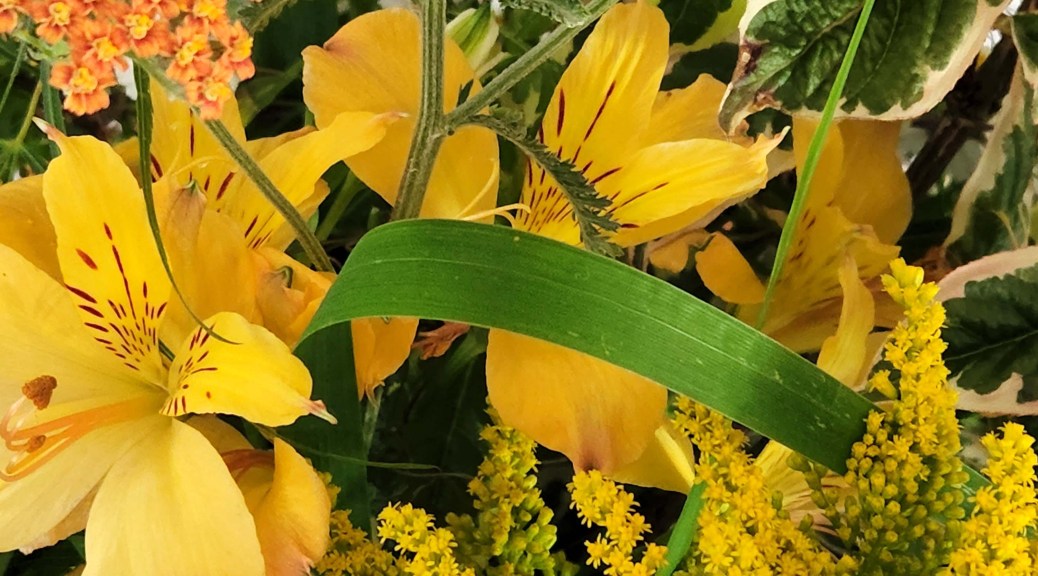Level 3 Advanced Studies in Experimental Stitch Exhibition

I recently completed Level 3 Advanced Studies in Experimental Stitch at the Gail Harker Creative Studies Center and we held an in-person and online exhibition. Gail’s courses are similar to City and Guilds in the UK. If you’re close to the Seattle area, there is a new session of Level 3 Stitch beginning in September. Just click on the link above for more information. (And you really don’t have to be that close, I live almost 600 miles away.)
We had a busy few days setting up the exhibition and I thought you might like to see a few set up photos.
And then it was the day of the exhibition. We had around 80 people attend over the two days in early July. It was wonderful to be able to see all the hard work accomplished by my fellow students and to share our work with other interested people.
I asked my fellow students if I could share their work and I’m happy that everyone agreed so that you can see some amazing fiber art. These are just a very few examples of their work produced in class.

Maureen Goldsmith wasn’t able to come to the in-person exhibition but was able to send her wonderful work.

Covid Birds by Maureen is a framed wall hanging, you can see it in the first photo behind the group photo on the wall, to understand the size of the piece.

Here’s a detail view so you can see the stitching more closely.

Val has an interest in historical embroidery and needlework.

Her piece “Pleasurable Pursuits” is based on historical needlework studies that she pursued during the class.

Here’s a detail shot so that you can see the amount of hand stitching in this piece.

Sheila Asdal created a machine and hand stitched book about the Big Leaf Maple and the creatures that find shelter and sustenance in the tree.

Here’s a side view and front cover of the book.

And a detail view of the stumpwork moth she created.

Catherine’s interests are from nature, including rocks, plants, seed heads and the winter garden.

She used her original photos of her winter garden to create this handstitched series.

Each of the individual pieces are about 6″ x 6″.

Bobbie Herrick is also inspired by her garden. She took on a tremendous project in creating The Hanging Garden light.

Bobbie’s lamp was created with machine and hand stitching and cut back applique. She found it interesting to work with light during this process as it changed the colors immensely when the light was turned on behind the fabric.

Alana Koehler was inspired by a row of bottles on her windowsill. As she worked through the process, she became intrigued with the difference between the hardness of glass and the translucent fabric that she ended up using in Ethereal Bottles.

The sheer fabric in Ethereal Bottles float away from the wall and the bottles are created with machine stitching. It is definitely ethereal in person.

And lastly, there is me. The Language of Trees is based on the concept that trees and other forest plants, have a vast communication network underground.

This wall hanging is mostly machine stitched on a dyed and painted background. The little bits of orange are words that I selected from tree poems to express the trees communicating with each other.
And because I have had a few people asking, I have also included my book about my dog Edgar. Here is “The Book of Edgar”.
Thanks to all my classmates for their camaraderie and support. Thanks to Gail and Penny for all your expert guidance and perseverance through a challenging three years of class.


































